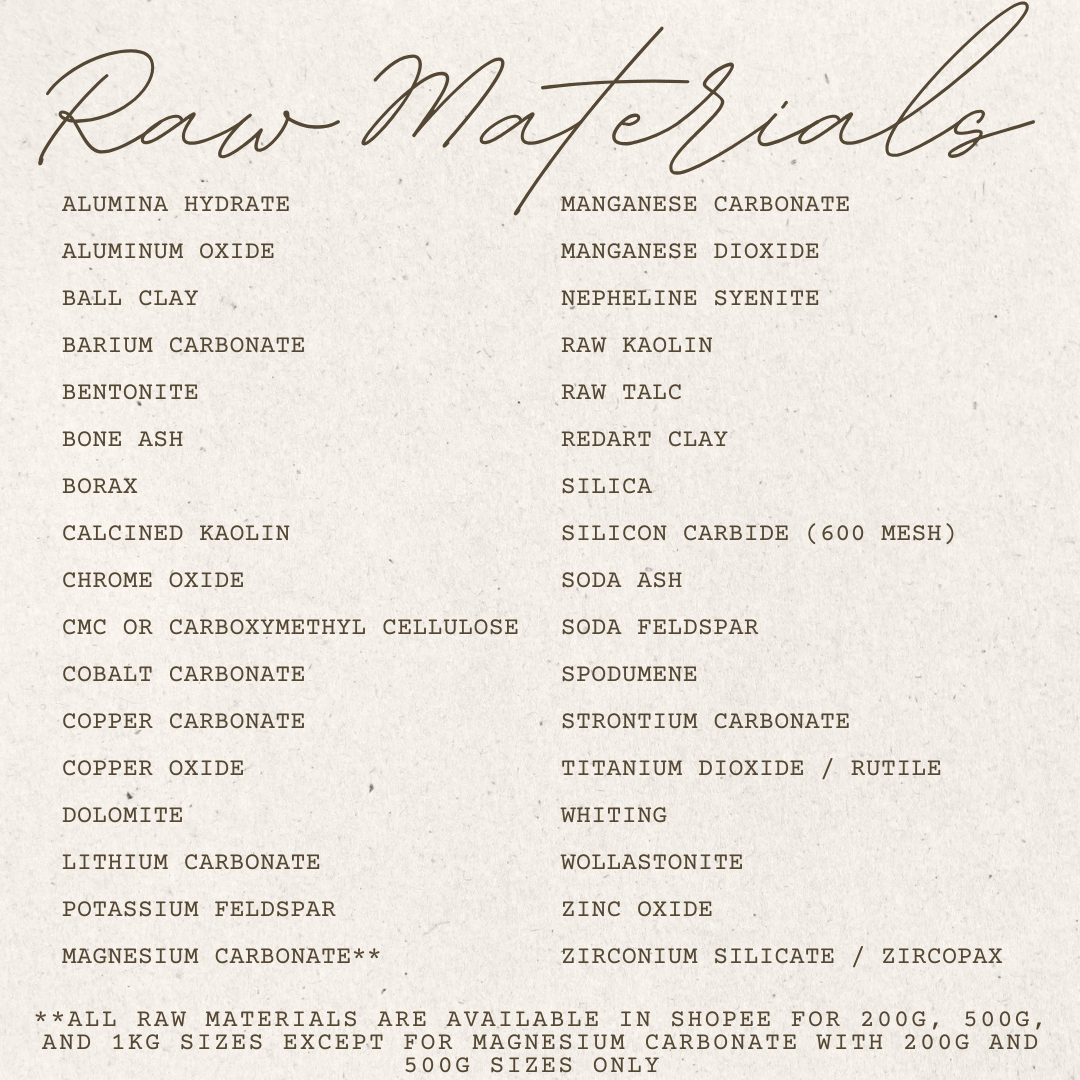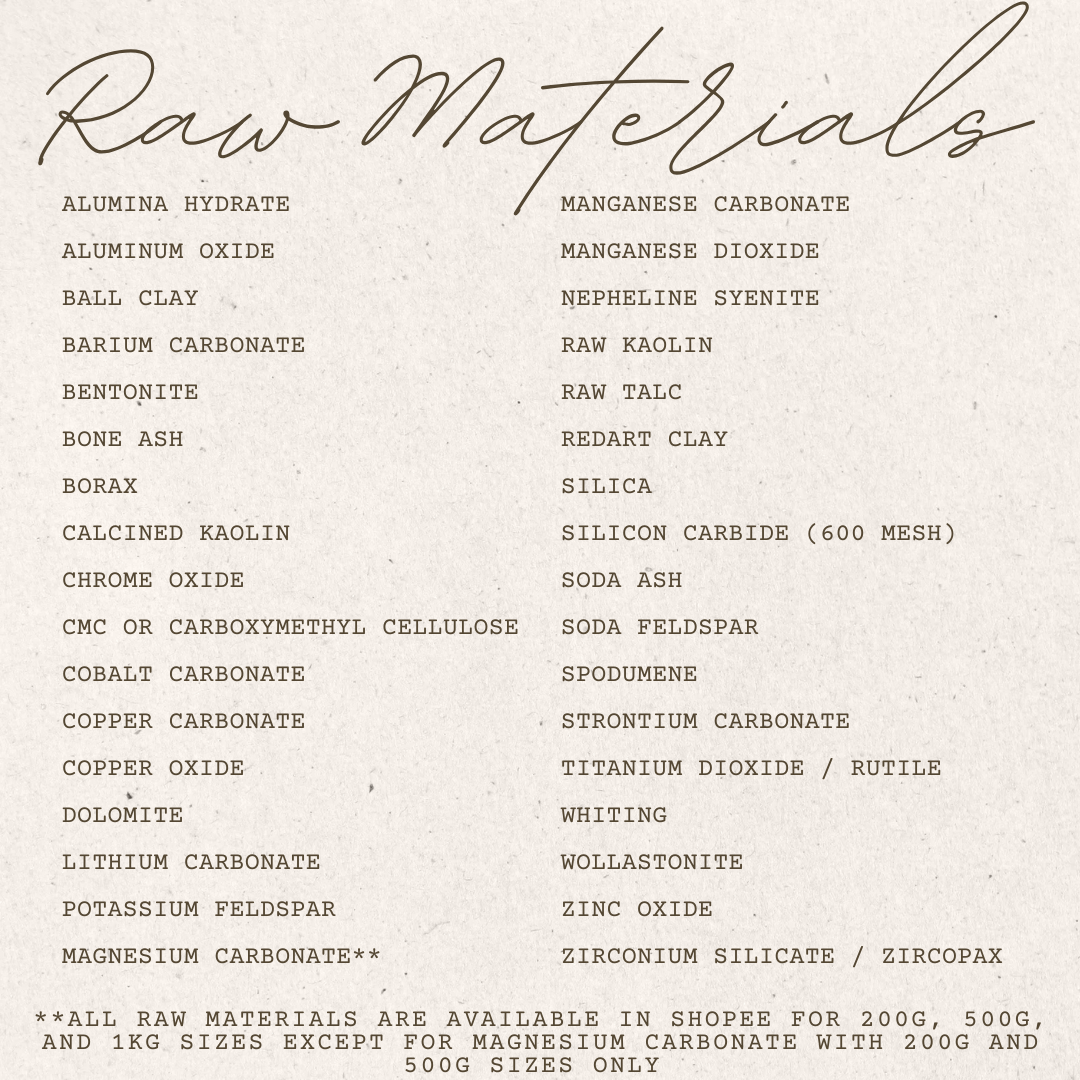Raw Talc is a naturally occurring mineral composed primarily of magnesium silicate. It is a highly versatile mineral with numerous applications across industries. Its unique properties, including softness, lubricating ability, and chemical inertness, make it a valuable material in cosmetics, ceramics, and other fields, contributing to improved product quality and performance.
Raw Talc, in pottery, is utilized primarily as a flux and filler, enhancing the workability and plasticity of clay bodies. Its fine, talc-like texture allows for smooth shaping and molding, making it easier for potters to create intricate designs. Talc also contributes to the thermal shock resistance of finished ceramic products, helping them withstand rapid temperature changes during firing and use. Additionally, it aids in lowering the melting point of glazes, promoting a glossy and smooth finish. By incorporating raw talc into their materials, potters can achieve greater durability, aesthetic appeal, and overall quality in their ceramic pieces.
Appearance:
-Fine, off-white powder, greasy or soapy feel.
Other applications in different industries:
1. Cosmetics:
Widely used as a filler and absorbent in products like face powders, baby powders, and other personal care items due to its softness and ability to absorb moisture.
2. Paper:
Used as a filler and coating agent in paper production, contributing to improved brightness, smoothness, and opacity.
3. Plastics:
Serves as a reinforcing agent and filler in plastic products, enhancing strength and durability while reducing production costs.
4. Paints and Coatings:
Utilized in paints and coatings to improve texture and provide a smooth finish.
NOTE: All Raw Materials are very fine-grained (200-325 Mesh).








